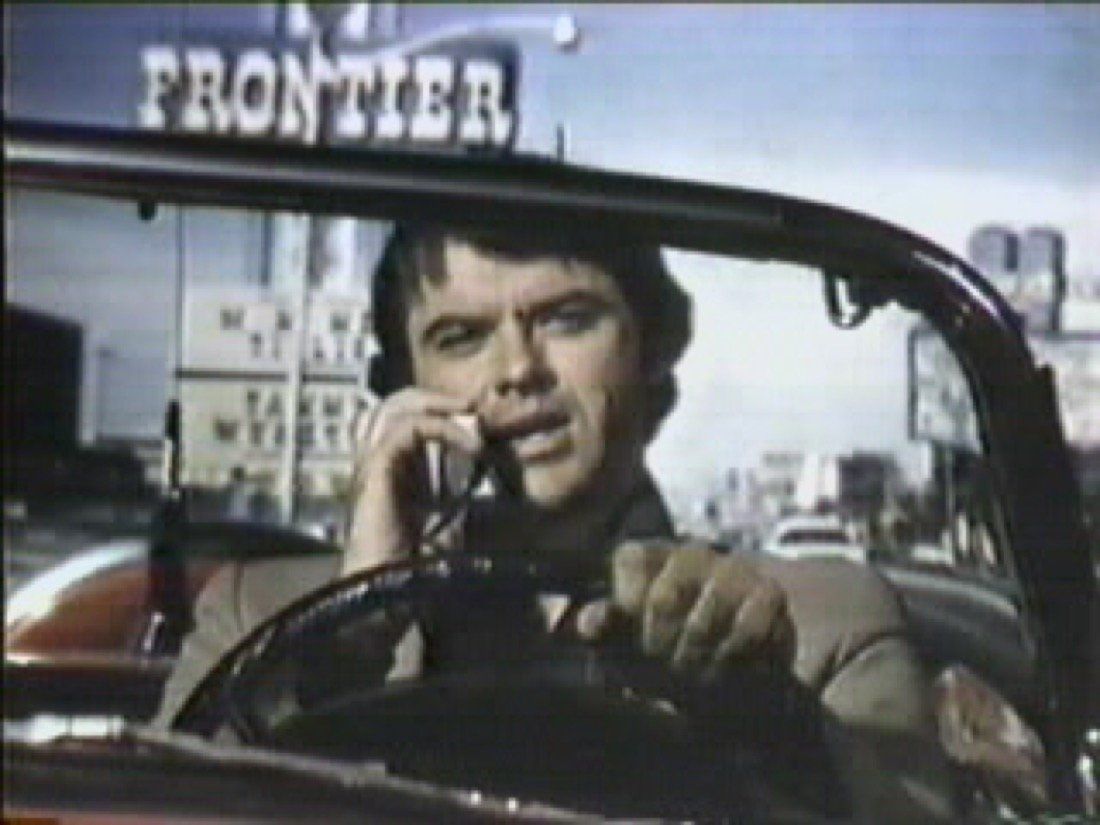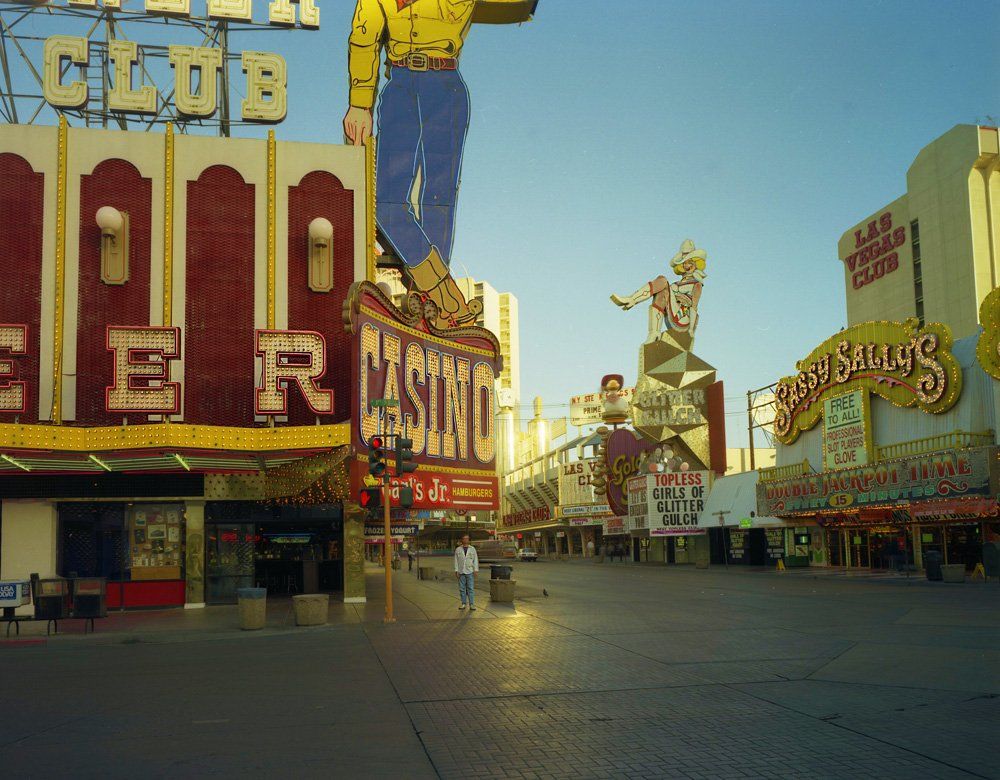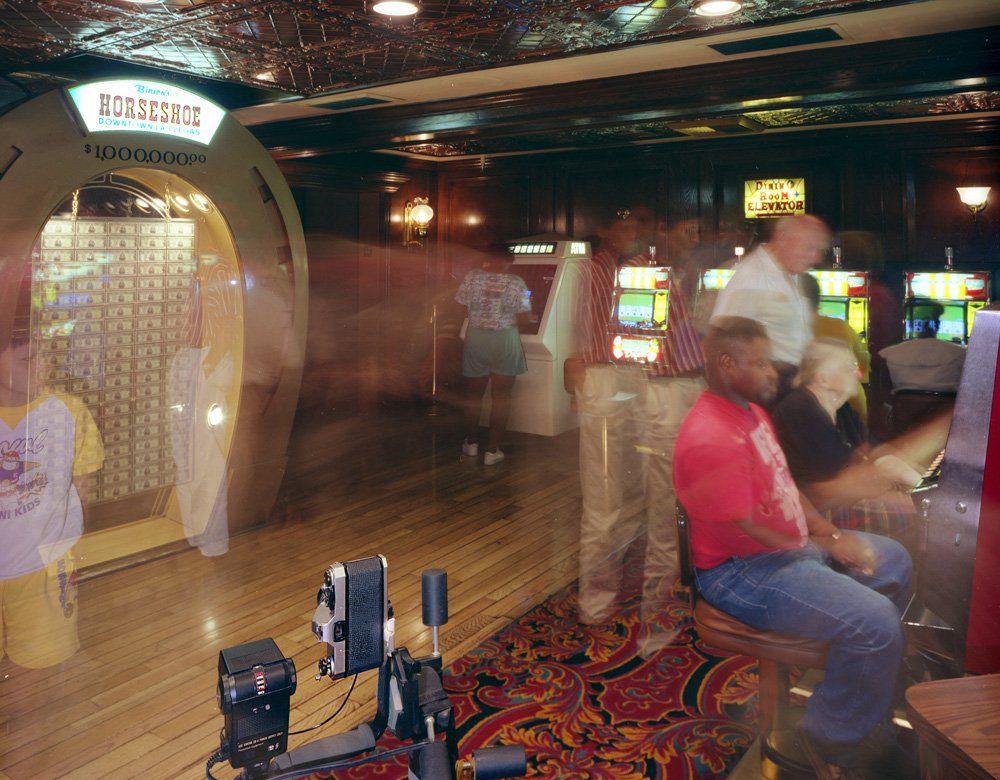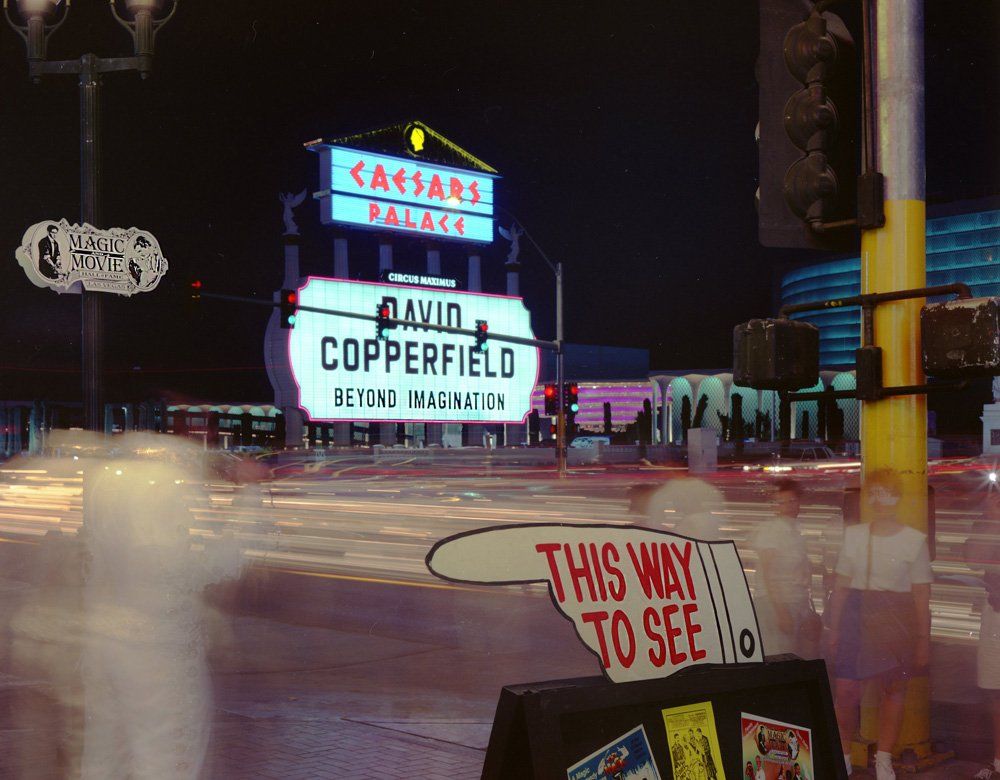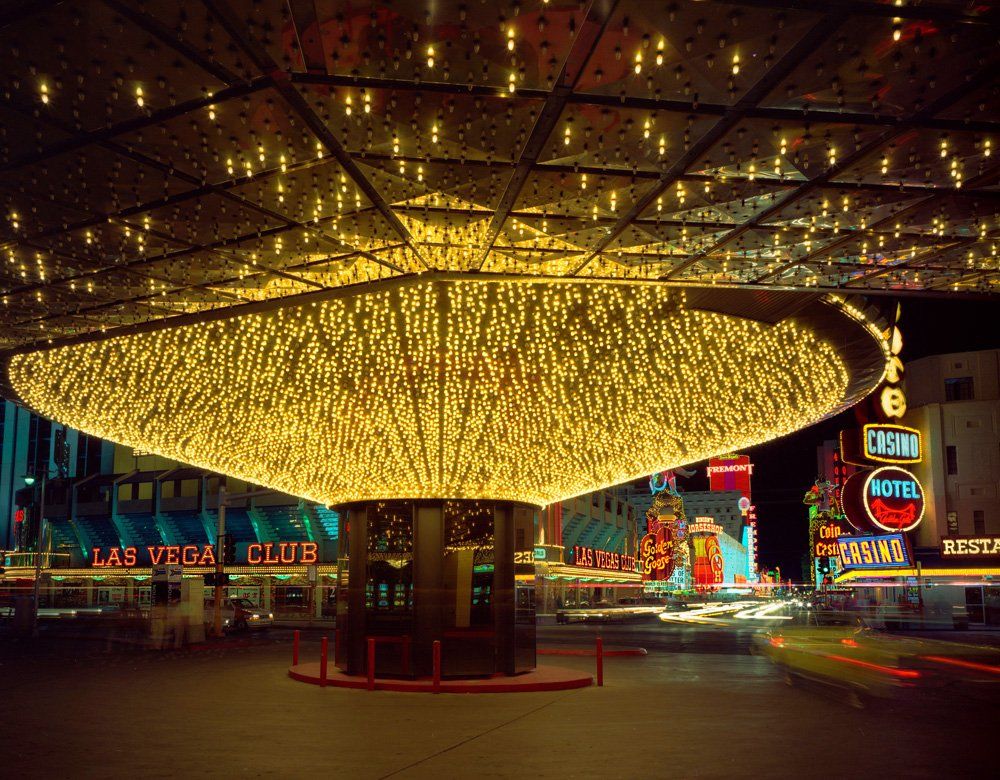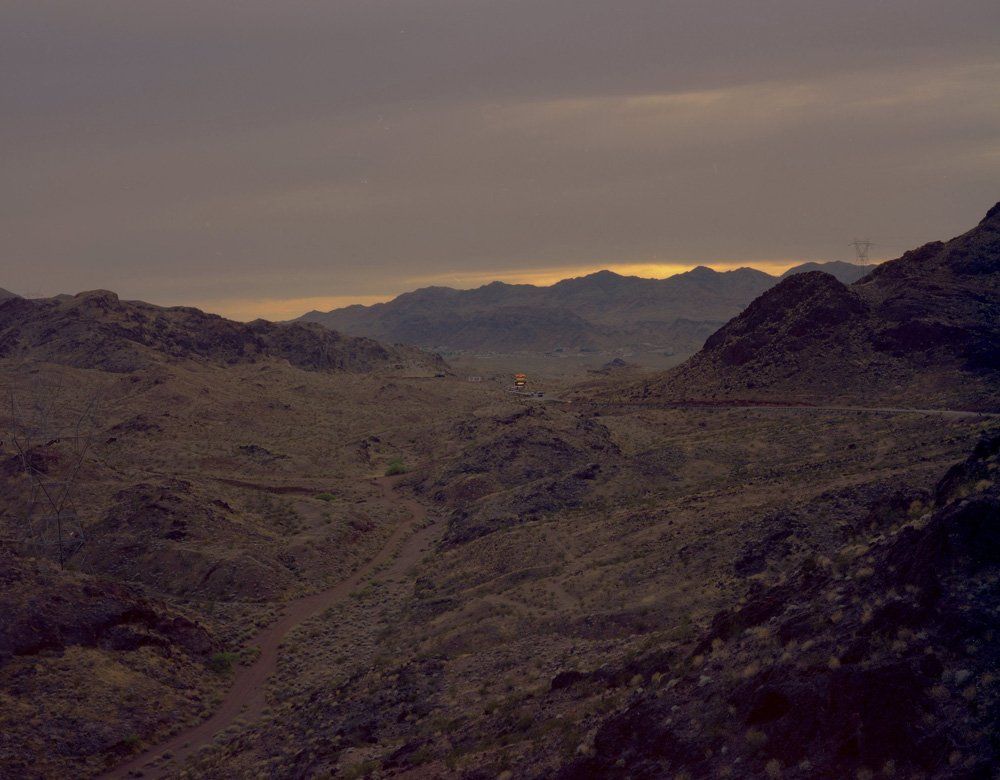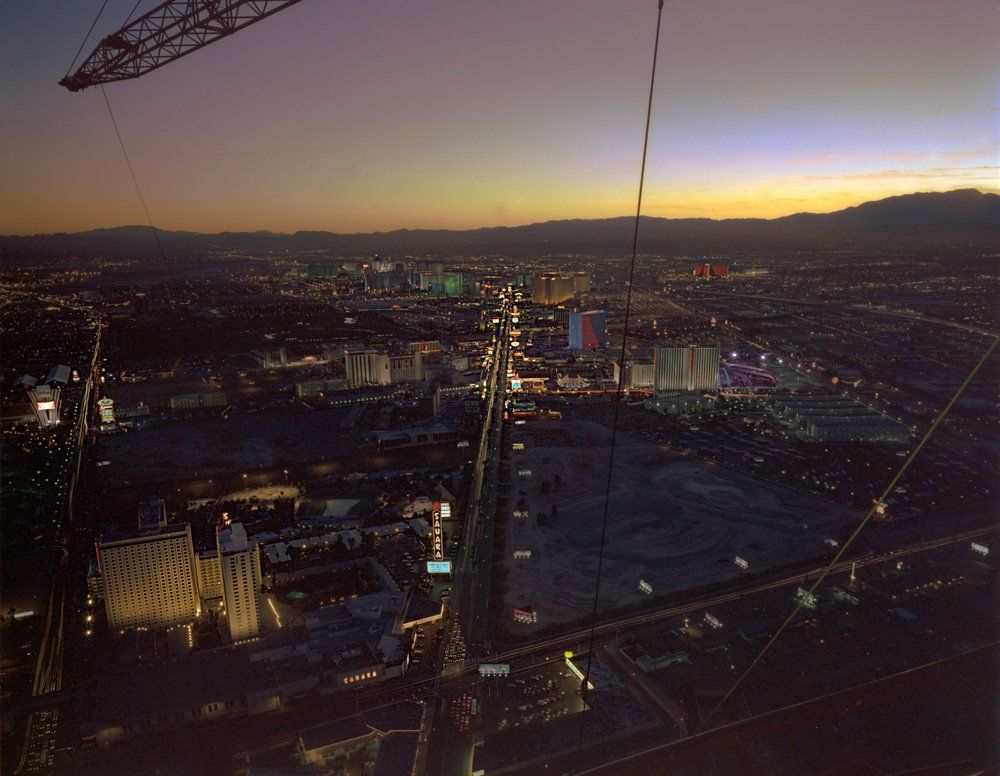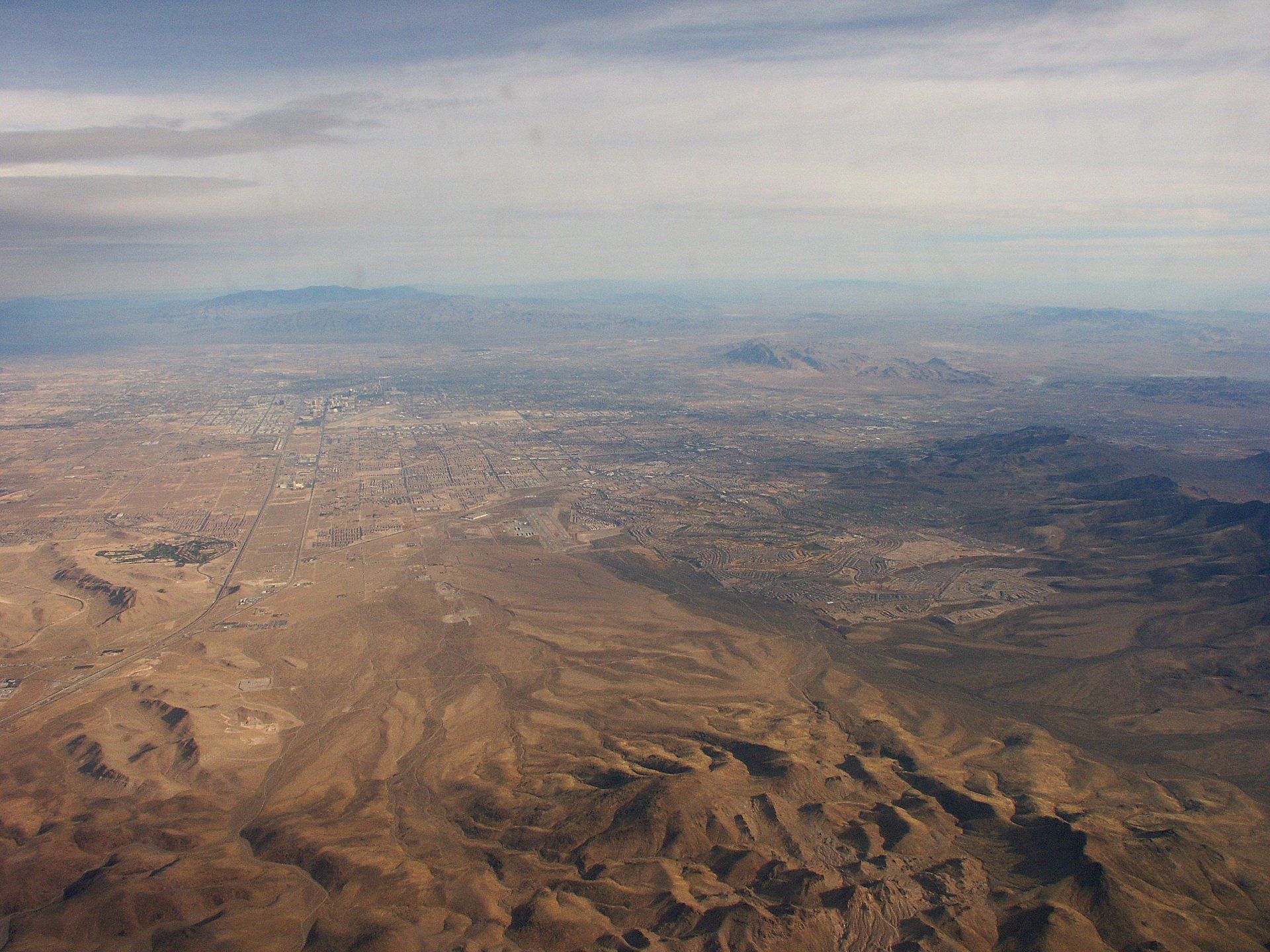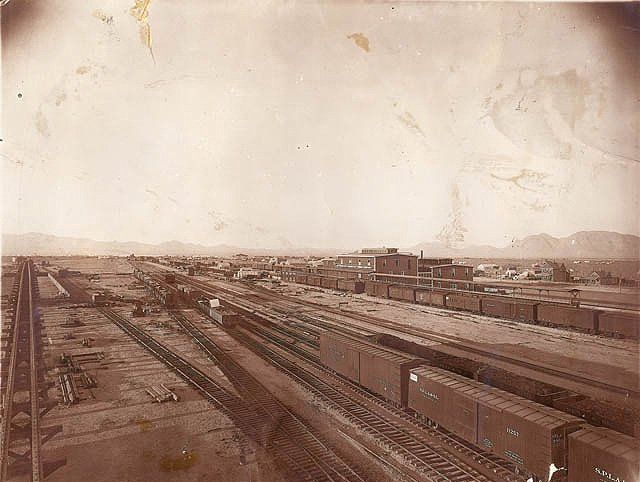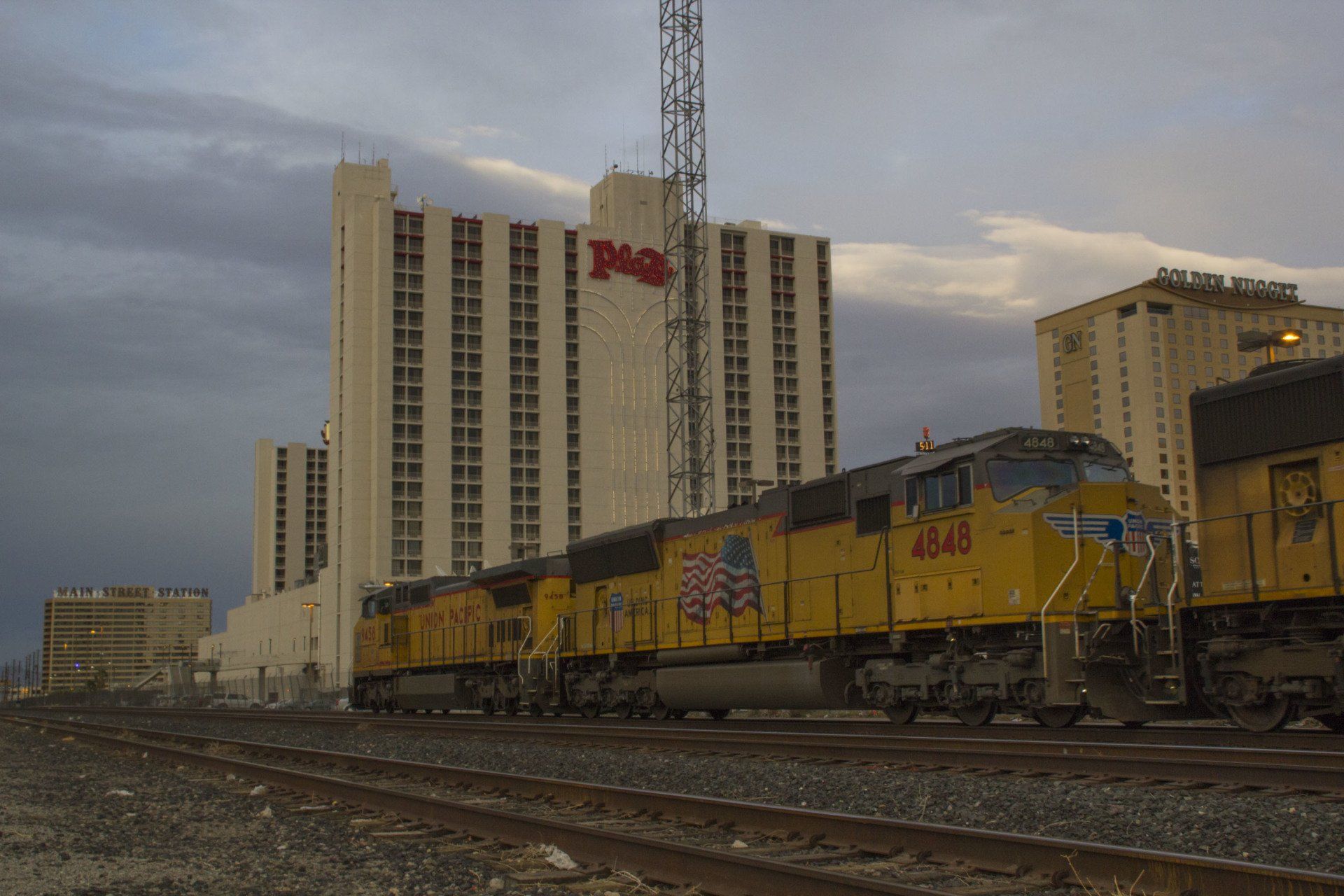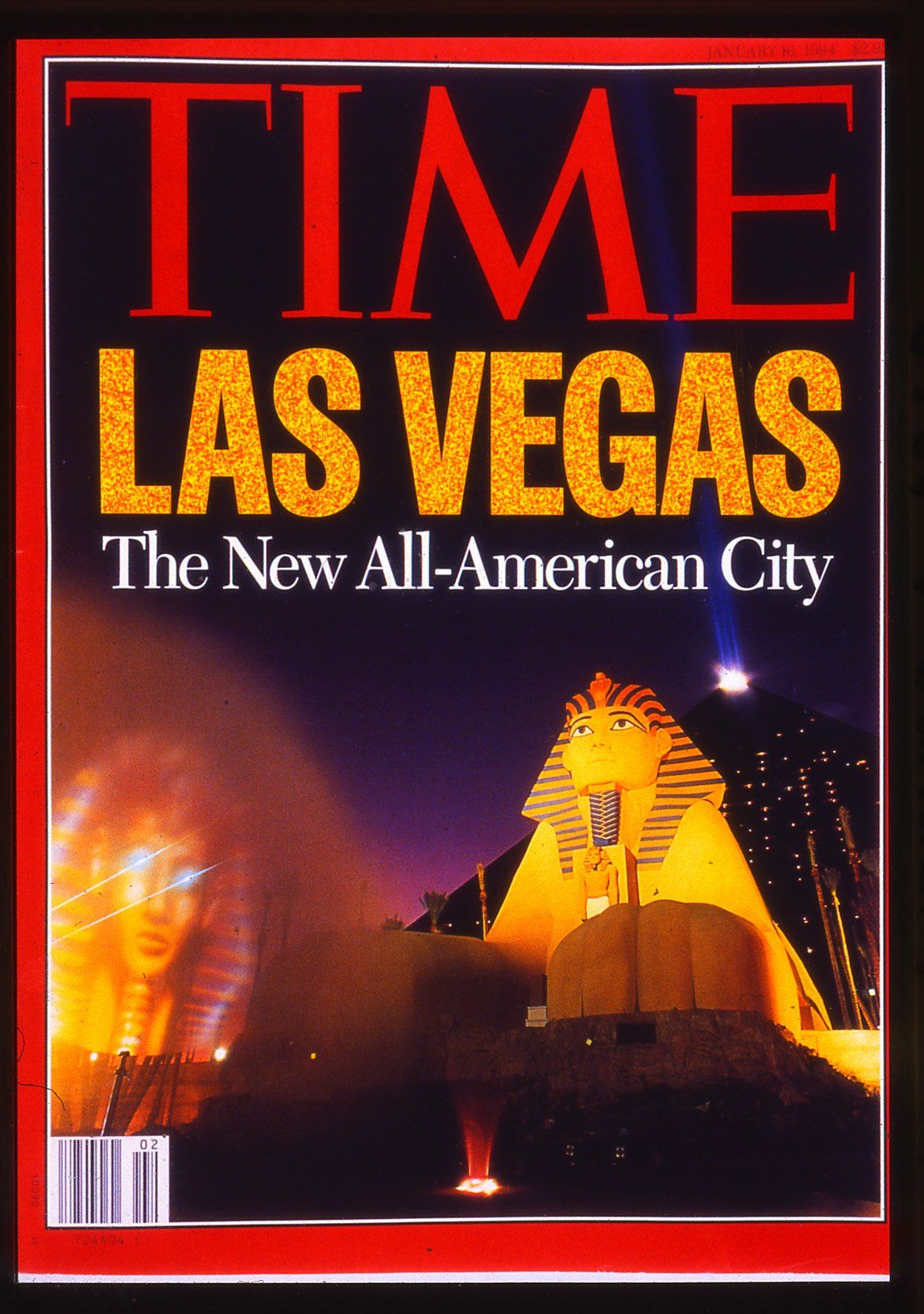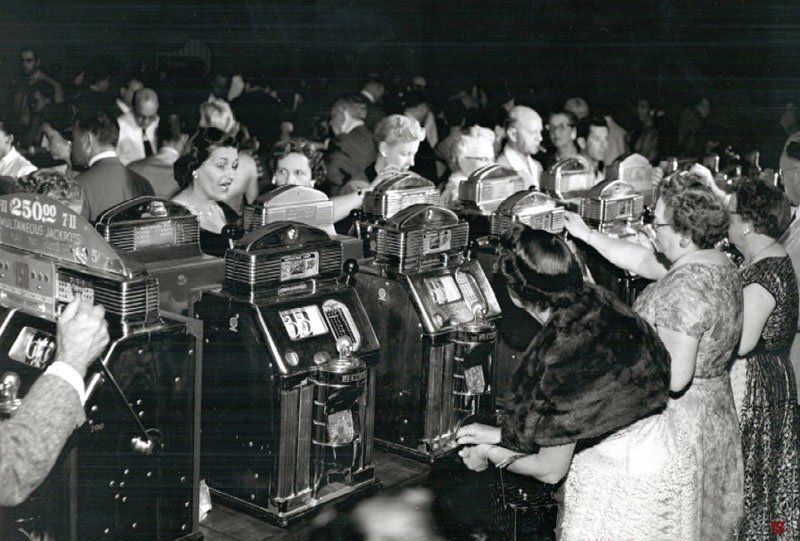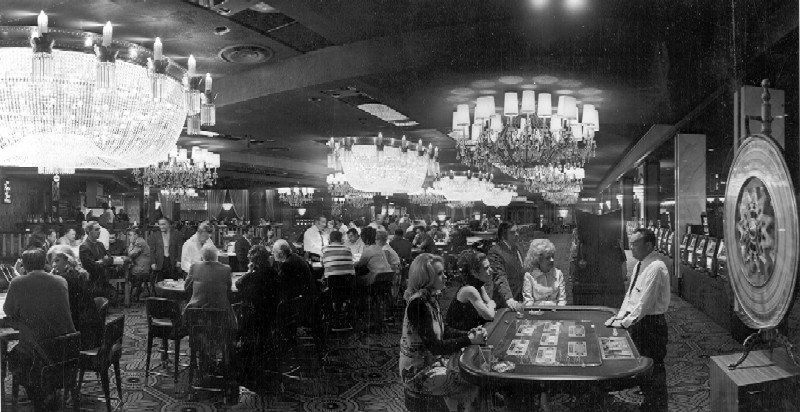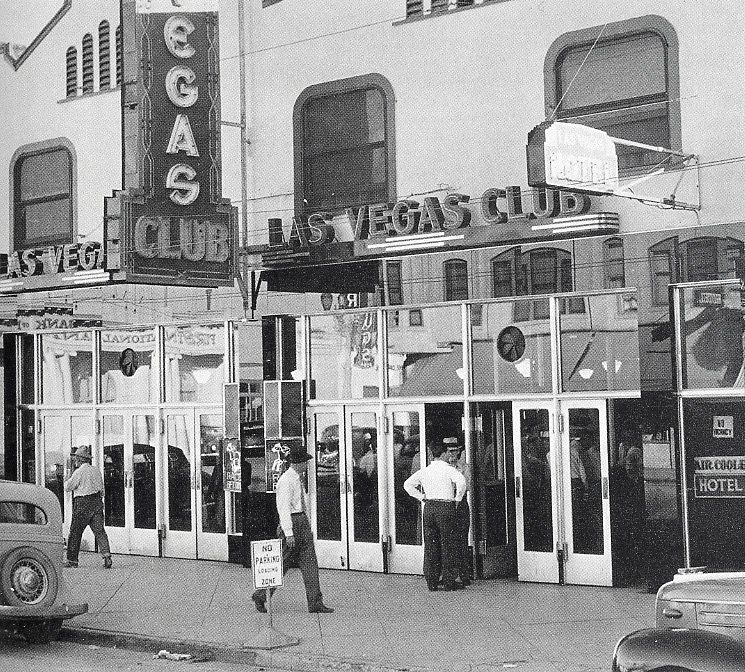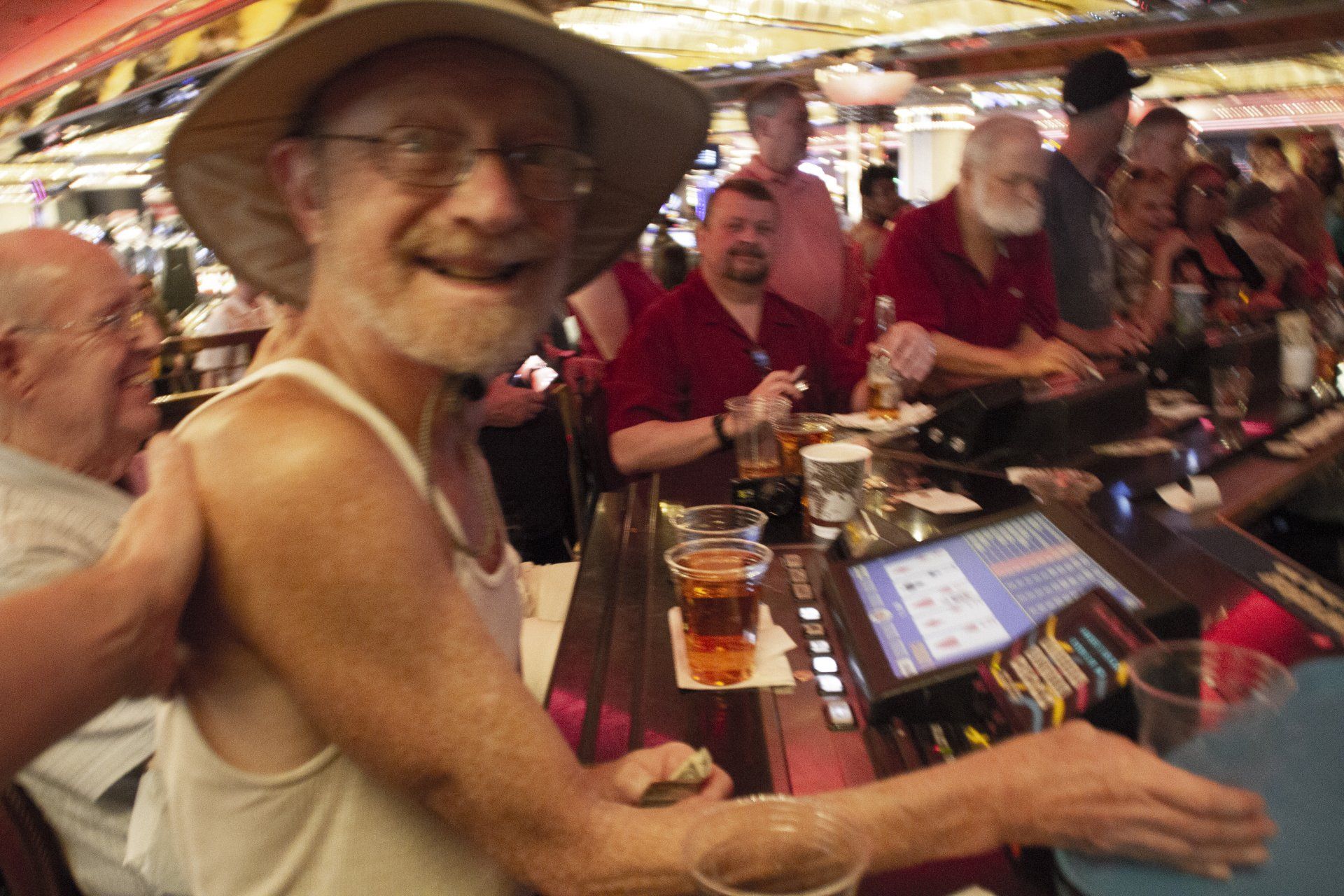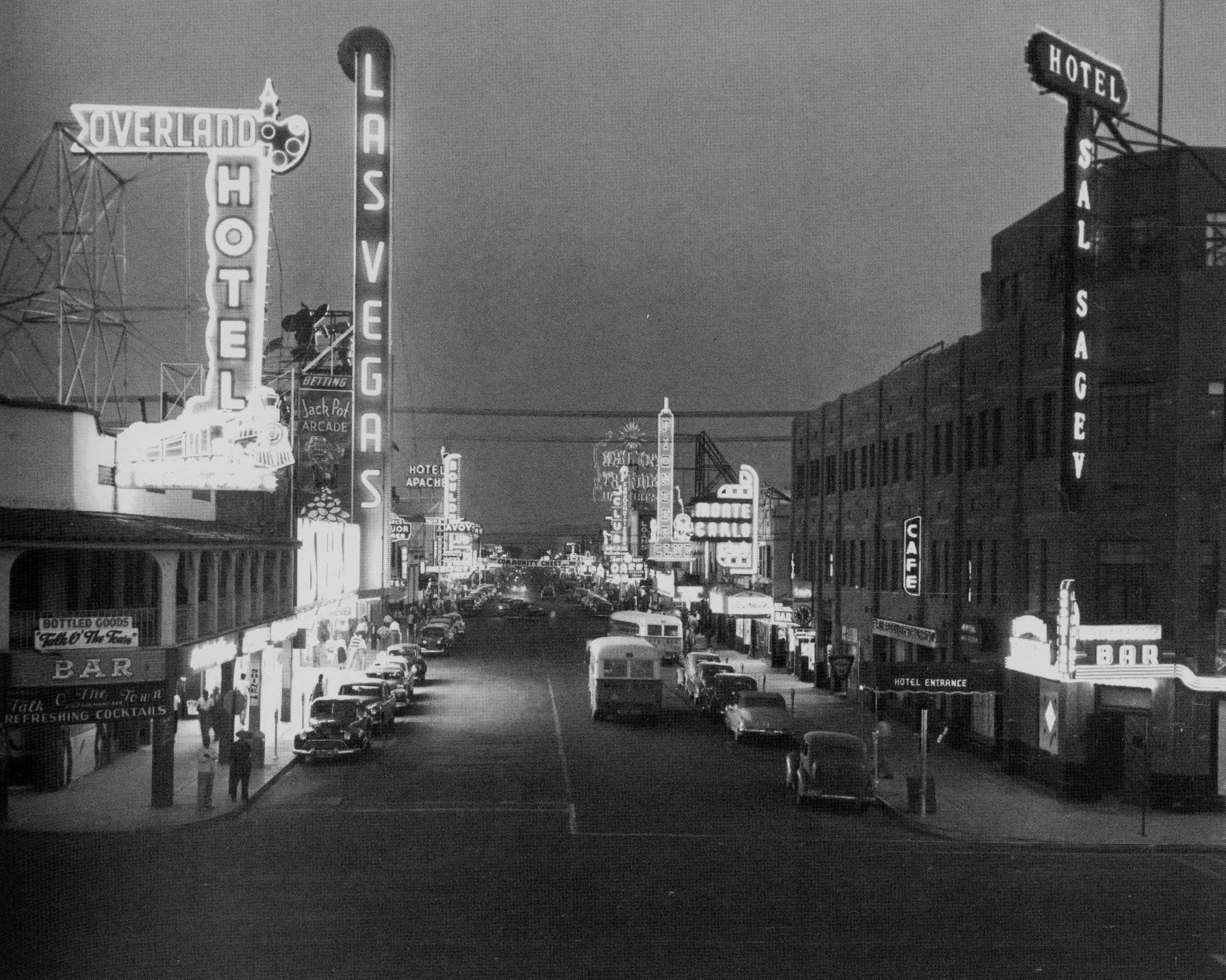Casino Landscapes
America's Gambling Mecca
In October 1993, Steve Wynn made room for another mega-resort on the Las Vegas strip when he imploded the Diamond of the Dunes tower and its 15 story neon sign. Within seconds, thirty years of Las Vegas history was pulverized.
Gallery
Visitors to the casino landscapes of Southern Nevada float between the worlds of passive observation and active participation, both within a carefully arranged field of view.
Defining what a casino landscape or experience is has been the point of departure for many books, essays and documentaries. It is amusing how many of them have claimed to have the inside scoop or a privileged view behind the scenes. While many essayists and photographers from outside of Las Vegas have attempted to uncover and reveal what they supposed to be the “real Las Vegas,” Charles and I photographed Las Vegas as it may be experienced by anyone who comes but as seen from the point of view of a couple of locals.
Defining what a casino landscape or experience is has been the point of departure for many books, essays and documentaries. It is amusing how many of them have claimed to have the inside scoop or a privileged view behind the scenes. While many essayists and photographers from outside of Las Vegas have attempted to uncover and reveal what they supposed to be the “real Las Vegas,” Charles and I photographed Las Vegas as it may be experienced by anyone who comes but as seen from the point of view of a couple of locals.
In our pictures of the casino landscape, there is no "man behind the curtain." In fact, the transition from the sidewalk to back room is seamless. The contemporary landscape of the casino has become a gathering place for over 32 million people a year, who share in the arranged immersion of this topography. It is out of that immersion that these photographs were made.
Field Notes
We were inspired to make this series of photographs by the implosion of the Dunes. The demolition of this hotel set us to thinking about what we call home, a place where history is one of the most interesting of any American city, but where the buildings that have defined that history are seldom preserved. Our own personal histories were intimately connected with the Las Vegas strip and the casinos.
Fred came to Las Vegas in 1968, Charles in 1974. Many contemporary artists are drawn to Las Vegas as a source of imagery for their part or find here parallels to many of the theoretical issues in contemporary art, such as the semiotics which describe the Strip as a readable text, or the architectural ideas of Charles Jincks which examined the dynamics of the Strip for its modernist iconography. Our work owes some of its meaning to such contemporary thinking, particularly theories of landscape and memory. But at the same time of actually photographing, we were approaching our subject from a personal perspective and intuitive method, reacting to the visual stimuli of the architecture, signage and activities in which we had immersed ourselves.
For seven months we cruised the Southern Nevada casinos like televisions Dan Tanner from the TV show Vega$. Throughout all hours of the day and into the night, we were veritable casino flies. While this photography is grounded in contemporary ideas of place and environment, we were guided by our personal backgrounds with casino environments as places experienced and not merely observed.
Our 4x5” view camera looked into the spaces rather than the objects themselves. While references to literal landscapes are abundant in the decor of Las Vegas casinos, we were mostly interested in the activities within this landscape. Keeping the camera shutter open, sometimes for as long as half an hour, we recorded the blur of energy, which casino promotional literature calls "live-action" or "non-stop action." While some of this action relates to gambling much of it does not. These photographs show the compression of a temporal experience within the parameters of a specific place, both of which seldom remain the same.

